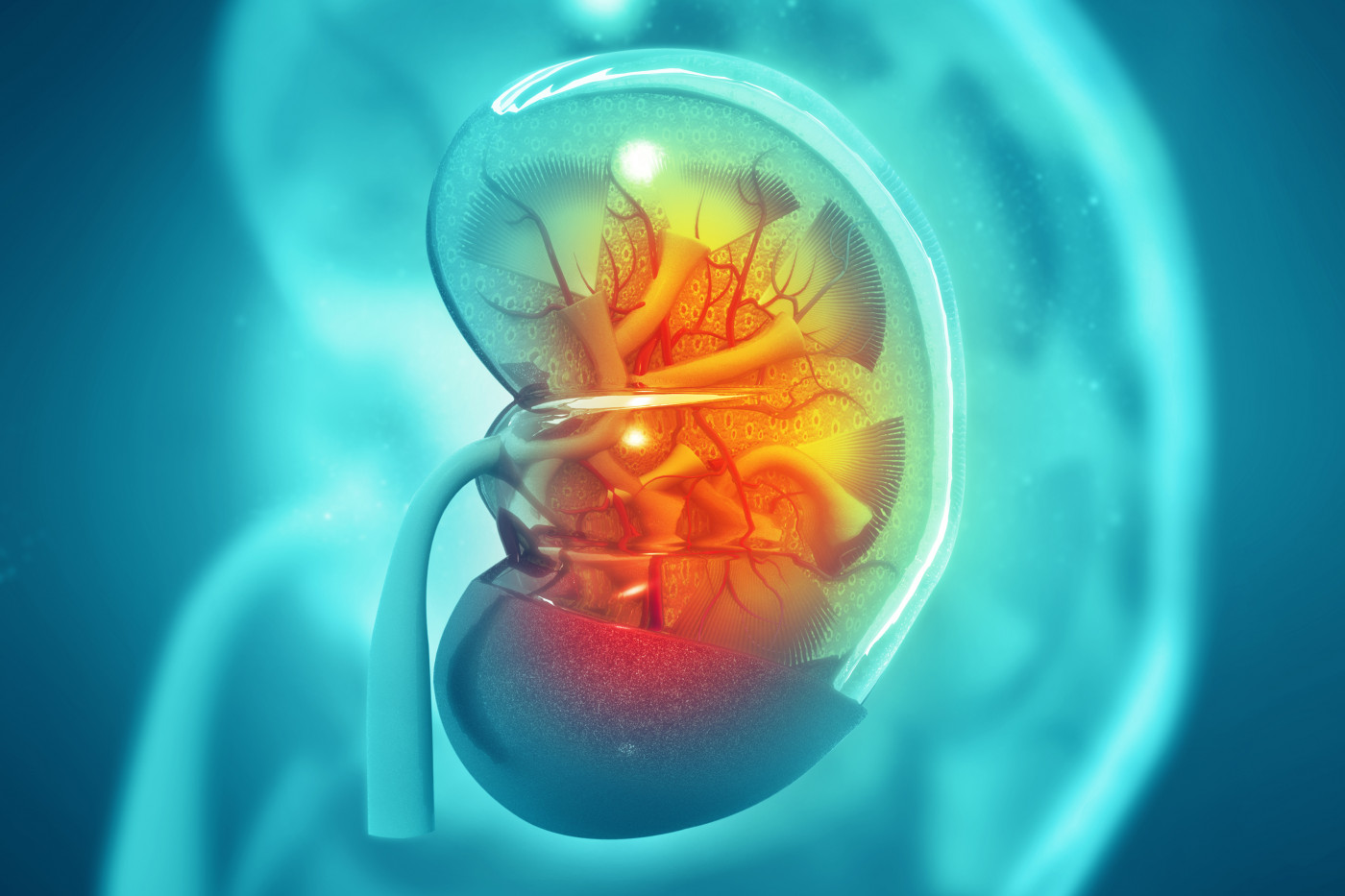GLA Gene Variant Found to Trigger Kidney Disease Associated With Fabry, Family Study Shows
Written by |

crystal light/Shutterstock
Scientists have found evidence that a GLA gene variant of unknown pathogenicity — meaning its ability to cause disease was still unknown — can trigger kidney disorders associated with Fabry disease.
Their findings were described in the study, “Renal globotriaosylceramide deposits for Fabry disease linked to uncertain pathogenicity gene variant c.352C>T/p.Arg118Cys: A family study,” published in Molecular Genetics & Genomic Medicine.
Fabry is a rare genetic disorder caused by mutations in the GLA gene — located on the X chromosome — that provides instructions for the production of an enzyme called alpha-GAL A. These mutations typically affect the function of alpha-GAL A, leading to the accumulation of a type of fat called globotriaosylceramide (Gb3) in several tissues and organs, including the kidneys.
Mutations that reduce the activity of alpha-GAL A to less than 1% are considered pathogenic, because they lead to the onset of Fabry. So far, more than 800 GLA pathogenic mutations have been reported in the literature about the disease.
However, some mutations may be considered benign or of unknown pathogenicity. This occurs when alpha-GAL A still retains approximately 20% of its original activity, and individuals carrying these mutations do not show any clear signs of Fabry, including the accumulation of Gb3 in different tissues and organs.
Now, investigators from the Hospital Infantil de México Federico Gómez described the case of a family in which several members were carriers of a variant of uncertain pathogenicity that was then found to be the cause of kidney disease associated with Fabry. This resulted in renal damage in male children, the researchers found.
The family’s grandfather, who passed away at age 49 from end-stage kidney disease, carried a missense mutation in which the nucleotide cytosine had been replaced by thymine at position 352 in the GLA gene sequence (c.352C>T). This led to the production of an abnormal protein, in which the amino acid arginine had been replaced by cysteine at position 118 of the alpha-GAL A protein sequence (p.Arg118Cys).
Nucleotides are the building blocks of DNA, while amino acids are the building blocks of proteins. A missense mutation is a single nucleotide mutation that alters protein composition.
Although it was not possible to confirm a Fabry diagnosis prior to the grandfather’s death, physicians deemed that finding would most likely be the case based on the presence of the c.352C>T gene variant, and on his medical history of kidney disease.
Genetic tests performed on his offspring and their children revealed that all eight of his daughters, and five of his seven grandchildren, carried the same mutation.
Testing revealed that the levels of Gb3 in the plasma and in the urine of all eight daughters and three of the grandchildren were normal. Likewise, tests that measured the activity of alpha-GAL A, and the levels of globotriaosylsphingosine (lyso-Gb3) — a molecule similar to Gb3 — in the plasma, also were normal or almost normal in all grandchildren who were tested.
Three grandchildren — two boys and one girl — with normal kidney function underwent a kidney biopsy. Biopsy findings revealed that both boys had typical signs of Fabry, including enlarged cells with a high number of vacuoles, which are enclosed compartments filled with water and other substances, and myelin figures. Myelin figures are aggregates or clusters made up of components from damaged cell membranes.
Both boys started treatment with agalsidase beta — an enzyme replacement therapy (ERT) sold under the brand name Fabrazyme by Sanofi Genzyme — as a preventative measure to avoid further kidney damage. Up until now, both boys continue to show no signs of Fabry disease and their kidney functions remain normal.
“This is the first report that shows a link between FD [Fabry disease] renal Gb3 deposits and c.352C>T/p.Arg118Cys variant, supporting pathogenicity of a variant considered until now with uncertain pathogenicity,” the researchers said.
“It is important to remember that symptoms may appear late in the [course] of the disease when the organ damage is severe or not reversible and the value of the ERT is less,” they added.
“So consider an active screening to find other FD affected family members, to have the opportunity to treat them early if they have a pathological [disease-causing] variant, to avoid early and late kidney or other organ damage developed [before] Gb3 deposits becomes transcendent especially in children,” the researchers concluded.





